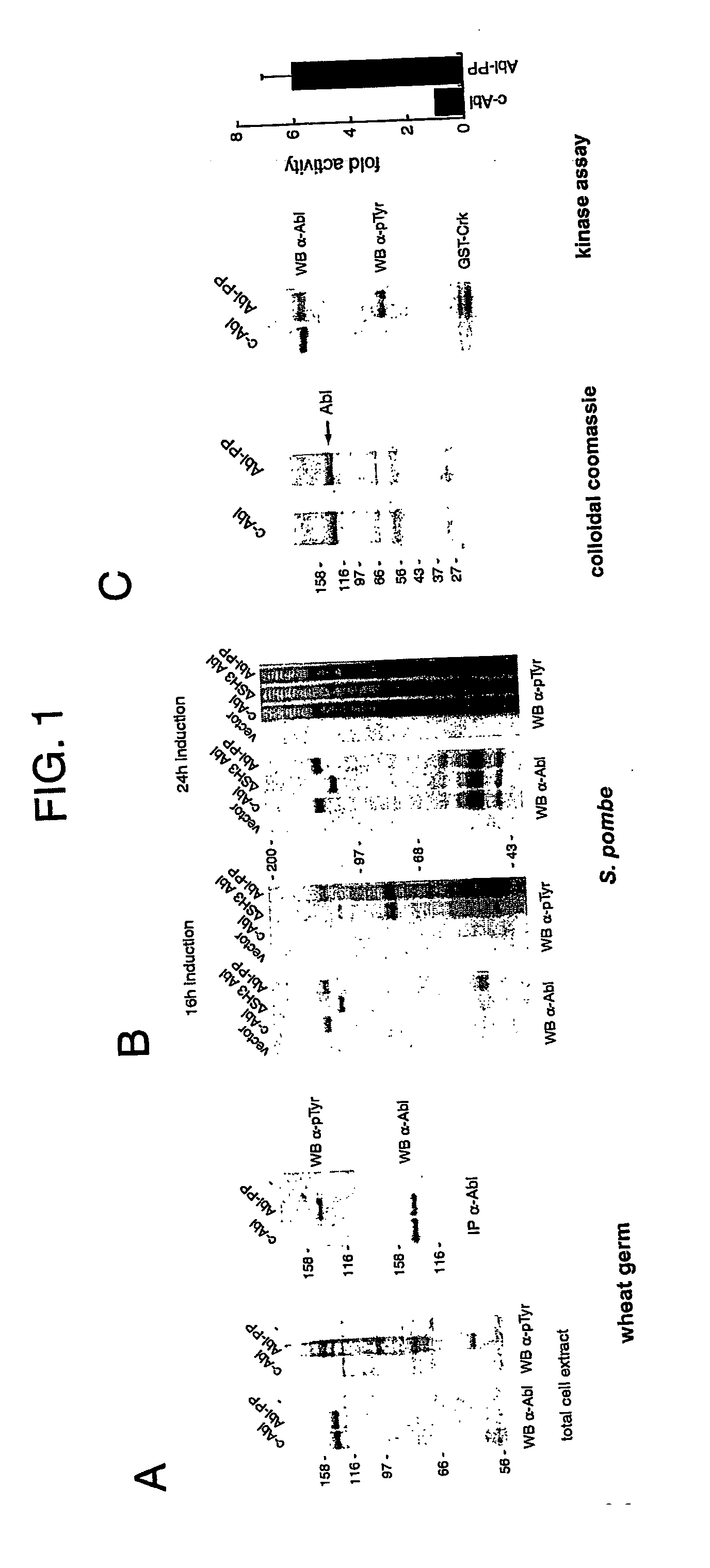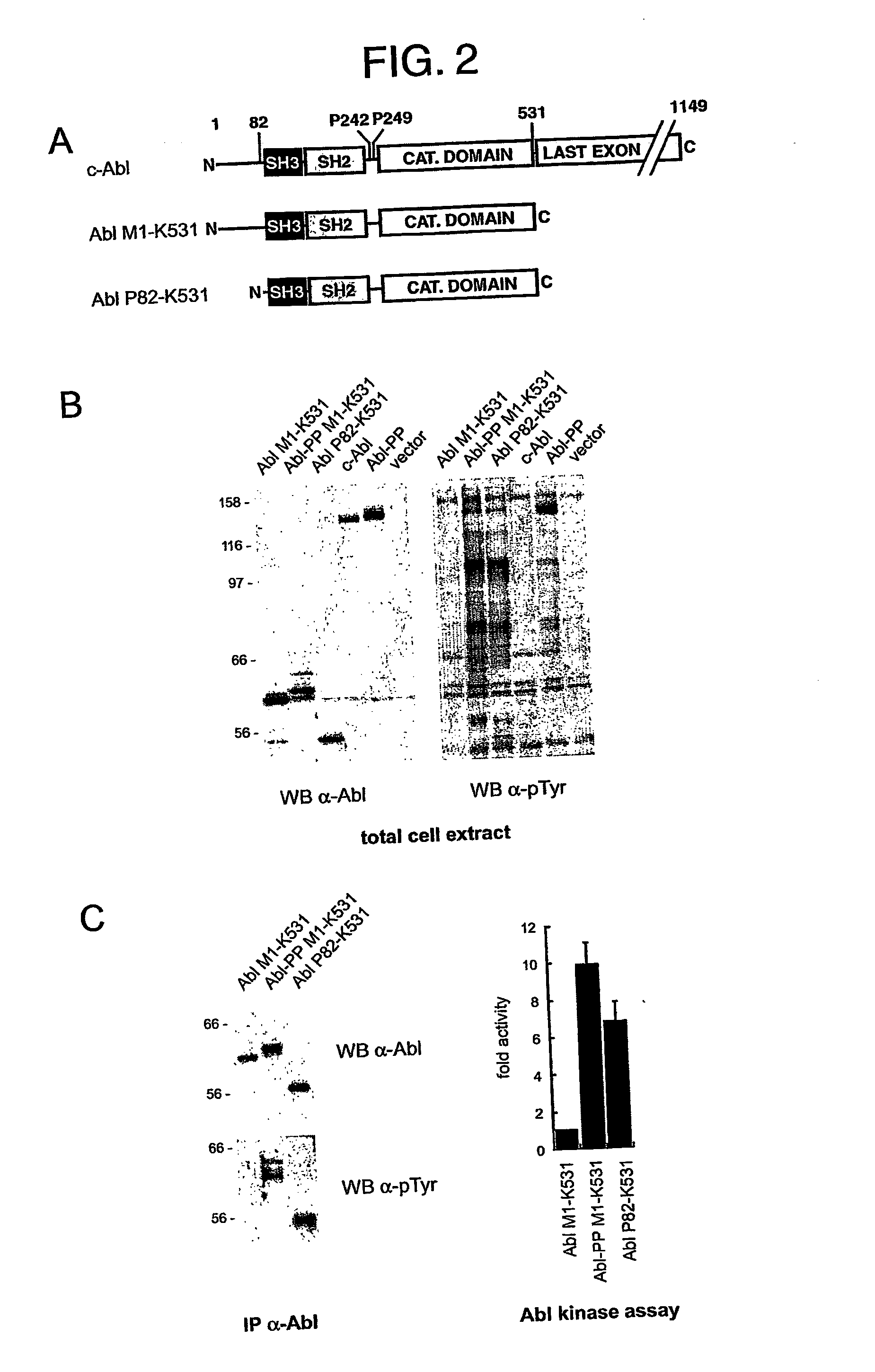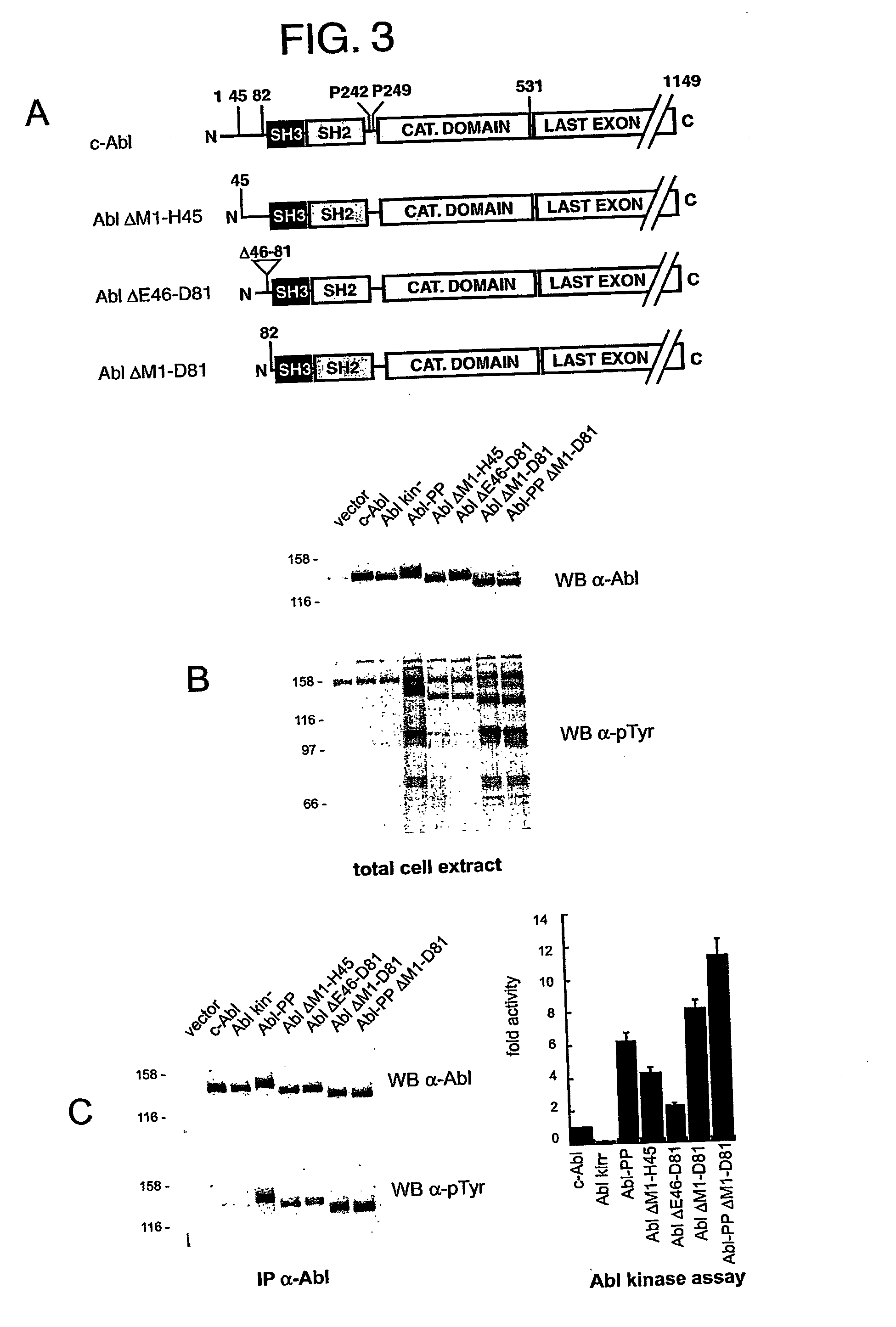Tyrosine kinase inhibitors
a tyrosine kinase and inhibitor technology, applied in the field of tyrosine kinase inhibitors, can solve the problems of inability to reconcile, elusive molecular mechanism responsible for the regulation of c-abl tyrosine linase, and inability to inhibit tyrosine kinase activity, so as to reduce tyrosine kinase activity, maintain inhibition of tyrosine kin
- Summary
- Abstract
- Description
- Claims
- Application Information
AI Technical Summary
Benefits of technology
Problems solved by technology
Method used
Image
Examples
Embodiment Construction
[0125] 1) Results
[0126] Expression of c-Abl in Non-Vertebrate Systems
[0127] c-Abl and Abl-PP, a deregulated form in which two prolines in the putative intramolecular SH3-binding region connecting the SH2 domain to the catalytic domain are mutated (P242E / P249E), were expressed in wheat germ extract. Analysis of total cellular proteins as well as of immunoprecitated c-Abl revealed that no tyrosine phosphorylation could be detected when c-Abl is expressed (FIG. 1A). However, expression of Abl-PP resulted in the phosphorylation of c-Abl itself and of a number of endogenous proteins, showing that c-Abl is regulated in extracts of plant cells.
[0128] We have previously reported that c-Abl and an SH3 domain deletion form of Abl were equally active and toxic in the yeast S. pombe (Walkenhorst et al., 1996). We addressed again regulation of c-Abl in S. pombe, this time using an inducible promoter of much weaker activity than the one used previously. In this case, SH3 domain-dependent regul...
PUM
| Property | Measurement | Unit |
|---|---|---|
| Efficiency | aaaaa | aaaaa |
| Efficiency | aaaaa | aaaaa |
| Efficiency | aaaaa | aaaaa |
Abstract
Description
Claims
Application Information
 Login to view more
Login to view more - R&D Engineer
- R&D Manager
- IP Professional
- Industry Leading Data Capabilities
- Powerful AI technology
- Patent DNA Extraction
Browse by: Latest US Patents, China's latest patents, Technical Efficacy Thesaurus, Application Domain, Technology Topic.
© 2024 PatSnap. All rights reserved.Legal|Privacy policy|Modern Slavery Act Transparency Statement|Sitemap



